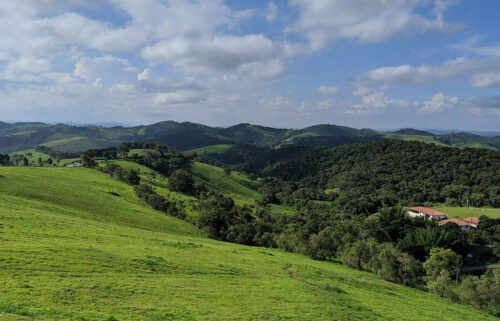Oregon workers’ compensation costs to drop for 10th straight year

SALEM, Ore. (KTVZ) – In 2023, Oregon employers, on average, will pay less for workers’ compensation coverage, the Oregon Department of Consumer and Business Services announced Wednesday.
The decline in costs marks 10 years of average decreases in the pure premium rate – the base rate insurers use to determine how much employers must pay for medical costs and lost wages.
Underpinning the cost decreases is the success of Oregon’s workers’ compensation system, which includes programs to control costs, maintain good worker benefits, ensure employers carry insurance for their workers, and improve workplace safety and health.
The numbers illustrate positive, long-term trends:
- Employers, on average, will pay 93 cents per $100 of payroll for workers’ compensation costs in 2023, down from 97 cents in 2022, under a proposal by DCBS. That figure covers workers’ compensation claims costs, assessments, and insurer profit and expenses.
- The pure premium rate will drop by an average 3.2 percent under the proposal. In fact, the pure premium – filed by a national rate-setting organization and reviewed by DCBS – will have declined by 49 percent during the 2014 to 2023 period.
The reduction in costs is due to an improvement in loss experience and loss development patterns in Oregon, according to the National Council on Compensation Insurance (NCCI). NCCI is the U.S. rate-setting organization whose recommendation DCBS reviews as part of its annual public process to decide rates.
Employers’ total cost for workers’ compensation insurance includes the pure premium and insurer profit and expenses, plus the premium assessment. Employers also pay at least half of the Workers’ Benefit Fund assessment, which is a cents-per-hour-worked rate.
The decrease in the pure premium of 3.2 percent is an average, so an individual employer may see a larger or smaller decrease, no change, or even an increase, depending on the employer’s own industry, claims experience, and payroll. Also, pure premium does not take into account the varying expenses and profit of insurers.
Helping sustain the trend in lower costs is the stability of Oregon’s workers’ compensation system. The system includes the Workers’ Compensation Division; Oregon OSHA; the Workers’ Compensation Board, which resolves disputes over the state’s workers’ compensation and workplace safety laws; the Ombuds Office for Oregon Workers, an independent advocate for workers on workers’ compensation and workplace safety and health; and the Small Business Ombudsman, an independent advocate for small business owners on workers’ compensation.
Those successful programs are funded by the premium assessment.
The premium assessment is a percentage of the workers’ compensation insurance premium employers pay. It is added to the premium. It would remain at 9.8 percent in 2023, the same as 2022. This would be the first time since 2016 that the premium assessment has not increased.
“In these uncertain times, stability is important for programs that benefit employers and workers,” said Andrew Stolfi, DCBS director and insurance commissioner. “Maintaining good worker benefits, while at the same time reducing costs to employers is positive for everyone.”
Meanwhile, the Workers’ Benefit Fund assessment provides benefit increases to permanently disabled workers and to families of workers who died from a workplace injury or disease. It also supports Oregon’s efforts to help injured workers return to work sooner – through incentive programs to employers – and earn their pre-injury wages.
The fund’s revenue comes from a cents-per-hour-worked assessment. The assessment would see no change in 2023, remaining at 2.2 cents per hour worked.
The decrease in the pure premium will be effective Jan. 1, 2023, but employers will see the changes when they renew their policies in 2023.
Oregon’s workers’ compensation premium rates have ranked low nationally for many years. Oregon had the seventh least expensive rates in 2020, according to a nationally recognized biennial study conducted by DCBS.
The following cost chart summarizes the changes and includes information about how to participate in the virtual public hearing set for Thursday, Sept. 15, at 3 p.m.: https://www.oregon.gov/DCBS/cost/Documents/wc-summary.pdf
More information about Oregon workers’ compensation costs: http://www.oregon.gov/DCBS/cost/Pages/index.aspx
| Workers’ Compensation Cost Summary: Effective Jan. 1, 2023 | |||
What | Pays for | Cost/Change | Recent Rate History |
| Pure premium | Medical costs and benefits for lost wages. Excludes insurer expenses and profit. | Average 3.2 percent decrease from 2022. | 2022: 5.8 percent decrease2021: 5.6 percent decrease2020: 8.4 percent decrease2019: 9.7 percent decrease |
| Premium assessment | State regulatory costs to administer workers’compensation andworkplace safety programs. | 9.8 percent of premiums for insured employers. | This amount is unchanged from 2022. The rate was increased by 0.8 percentage points in 2022 and 0.6 percentage points for 2020 and 2021. |
| Self-insured employer and employer group premium assessment | Self-insured employers and self-insured employer groups pay the premium assessment, plus an additional amount to fund reserves that ensure prompt payment of claims in the event of insolvencies. | 0.1 percent for self-insured employers. 0.1 percent for public-sector self-insured groups. 0.5 percent for private-sector self-insured employer groups. | These amounts are unchanged from 2022. |
| Workers’ Benefit Fund (Payroll assessment) | Special benefits for certain injured workers and their families, and return-to-work programs. | 2.2 cents per hour worked. Employers and employees split the cost. | The rate is unchanged from 2022. |
Written testimony will be accepted through 5 p.m. Thursday, Sept. 22, 2022, by the Director's Office of the Department of Consumer and Business Services, 350 Winter St. NE, P.O. Box 14480, Salem, OR 97309-0405.
###
The Department of Consumer and Business Services is Oregon’s largest business regulatory and consumer protection agency. For information, visit http://www.dcbs.oregon.gov/.



